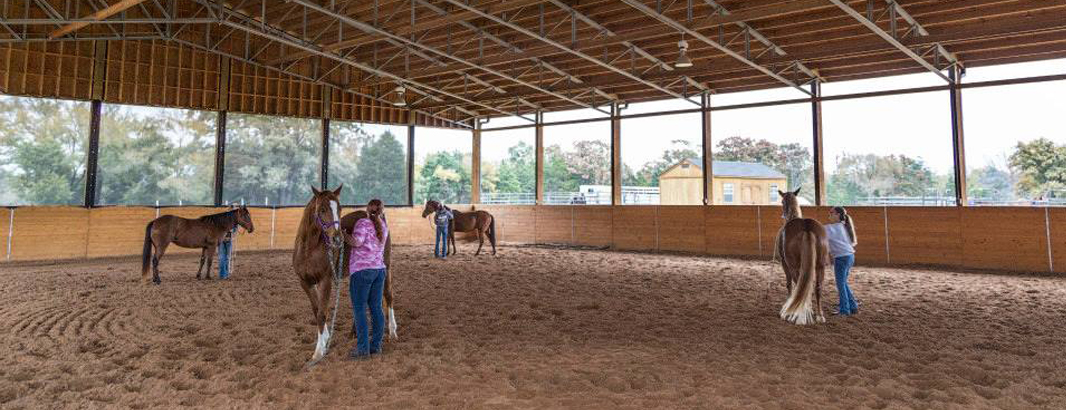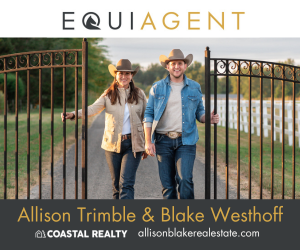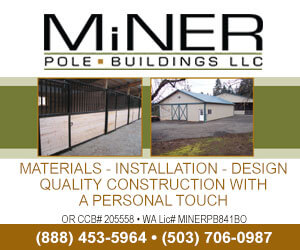Five Considerations for Building a Solid Arena
by Glynnie Walford
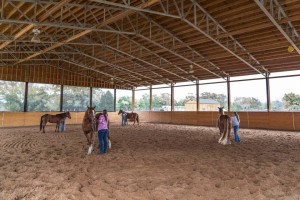
Equestrians will agree that when it comes to arena riding, a well-appointed ring is a joy to work (and play!) in. The footing you choose for this enclosure will depend on a variety of factors and will be the most important component of a well-designed and properly constructed riding area.
Next to the footing, the base is the most important part of your arena and often something that gets overlooked during construction. Here are some considerations for creating a quality surface for all of your equine endeavors.
-
Cut and fill.
Cut and fill is the process of cutting into a bank and re-laying the material lower down the bank to create a “level formation” for your outdoor equine arena. The banks/ slopes must be created correctly to support the new formation. The more level the site, the less cost will be involved in the initial stages of construction.
-
Build at the right time of year.
The best time to build a new arena is during a dry period, preferably in the late spring/summer or early fall. Clay, in particular, needs to be carefully managed so “clay heave” does not occur. This happens when the clay is wet and under pressure causing it to bubble up. This can move the stone layer and membranes, leading to contamination of the surface and poor drainage.
-
Positioning.
A sheltered spot is good, however, watch for trees and construct away from roots utilities and obstructions. Be mindful of leaf contamination in the fall.
-
Pay attention to drainage.
Internal drains should be spaced every 30 feet, linking into a perimeter, and then to outfalls to take surface water away. If the ground is heavy clay, additional cross drains may be required and the diameter of the exterior drains may have to be increased. It is important that the drain runs have a consistent fall. Ensure drainage trenches are backfilled with clean drainage gravel (no “fines” or dust). The tops of all the trenches and overall arena should be covered with a fine grade (e.g. 4 oz.) non-woven geo-textile membrane. This acts as a separator between the earth and clean stone layer. This will allow the water to pass into the drains, but will prevent silt/ sediment from doing the same. It is important to include drainage trenches on the outside of the arena. These external drains will stop the run off from adjacent paddocks so this is especially important if an arena has been cut into the slope. They are also important because the outside track typically has the heaviest foot fall.
-
Use quality stone for your base.
For the base layer (stone drainage layer), it is vital that clean, hard, angular stone is used. “Clean” means the stone has been washed so stone dust/ fine soil is not washed straight into your drains, causing reduced flow of surplus water. We recommend granite or a hard limestone (not soft limestone). The stone layer should be 4” compacted depth when laid (dependent upon type of sub-soil), ideally the stone layer should extend 20” beyond the fence/ kick boards so the perimeter drain is laid outside the school. Be cautious if your contractor does not specify the grade/ quantity or depth of the materials being laid. Clearly, if less stone is used it will be cheaper. “Hard” means the stones are frost resistant (will not break down after successive winters or fracture due to the weight of maintenance machinery). The quarry can provide technical data sheets if there is any doubt. A good test? Take two stones and bang them together; they should not dust, crack or break. If they do, they are not frost resistant. Angular stones must interlink together, so they need to be of similar size, typically 1 ¾” to 2 ¾”. If the stone is rounded it will never “knit” together, so the surface will never be correctly compacted.
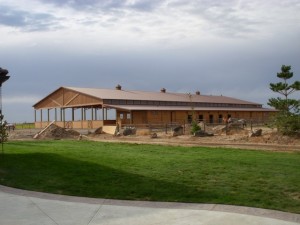
Attention to these five things will ensure a solid base for your new arena and longevity for its use.
Glynnie Walford has been with the Martin Collins Group for 23 years and has extensive knowledge across the sport horse and Thoroughbred racing worlds. Glynnie has coached the British Dressage Regional Advisors on footing and has spoken at the Aachen School of Course Design in Germany. She now has a keen interest in the cutting world. Questions about arenas or your current footing? Visit martincollinsusa.com and complete the contact form.


